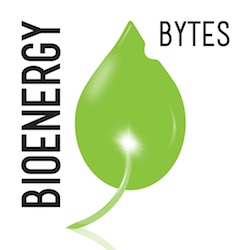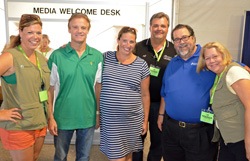The U.S. Army Corps of Engineers (USACE), Engineering and Support Center, Huntsville, working with the Army Energy Initiatives Task Force (EITF), awarded Multiple Award Task Order Contracts (MATOC) to a group of 22 solar technology contractors. Solar is the second of four technologies being awarded under the $7 billion Renewable and Alternative  Energy Power Production for DoD Installations MATOC. The first, geothermal, was awarded May 3. The remaining technologies – wind and biomass – will be awarded on a staggered schedule by the end of the calendar year.
Energy Power Production for DoD Installations MATOC. The first, geothermal, was awarded May 3. The remaining technologies – wind and biomass – will be awarded on a staggered schedule by the end of the calendar year.
“The MATOC represents a major step forward in the procurement of renewable energy for the Army and the other Services that will significantly reduce timelines by streamlining acquisition processes. Utilizing the MATOC in this way will assist the EITF in meeting the Army’s goal for one gigawatt renewable energy by 2025 as well as additional Congressional mandates,” said John Lushetsky, EITF’s Executive Director.
This MATOC will be used to procure reliable, locally generated, renewable and alternative energy for DoD installations through power purchase agreements (PPA). The $7 billion capacity will be expended for PPAs to procure energy during a period of up to 30 years from renewable energy generation systems that are designed, financed, constructed, operated and maintained by contractors using private sector financing.
The companies awarded contracts are: Acciona Energy North America Corporation, Apex Wind Energy Holdings; Borrego Solar; Cobra Industrial Services; Dominion Energy; Element Power US; Emerald Infrastructure; Enel Green Power North America; Energy Matters; Gehrlicher Solar America Corporation; Johnson Controls Government Systems;
Lend Lease; LTC Federal; New Generation Power; NRG Energy; Photon Finance; SunPower; Siemens Government Technologies; Silverado Power; Solar Power Ventures;
Standard Solar; Sunpower Corporation; and Washington Gas Energy Systems.
These contracts will place the Army one step closer to meeting its Congressionally mandated energy goal of 25 percent production and consumption of energy from renewable sources by 2025 and improving installation energy security and sustainability.
“Awarding these contracts for solar technology is an important milestone in the process of awarding contracts for the four technologies selected to help the Army meet renewable energy goals,” said Col. Robert Ruch, commander, U.S. Army Engineering and Support Center, Huntsville. “By pre-qualifying companies under each technology and awarding the contracts to them, we are situated to more quickly award task orders for individual future projects being developed by the Army or DoD. We look forward to working with the EITF and other potential DoD organizations to help implement renewable energy projects.”
In April 2012, the White House announced the Defense Department was making one of the largest commitments to clean energy in history, by setting a goal to deploy three gigawatts total of renewable energy – including solar, wind, biomass or geothermal – on Army, Navy and Air Force installations by 2025. The Army’s goal is one gigawatt of that total. These efforts support the broader DoD goal to enhance installation energy security and reduce installation energy costs.











